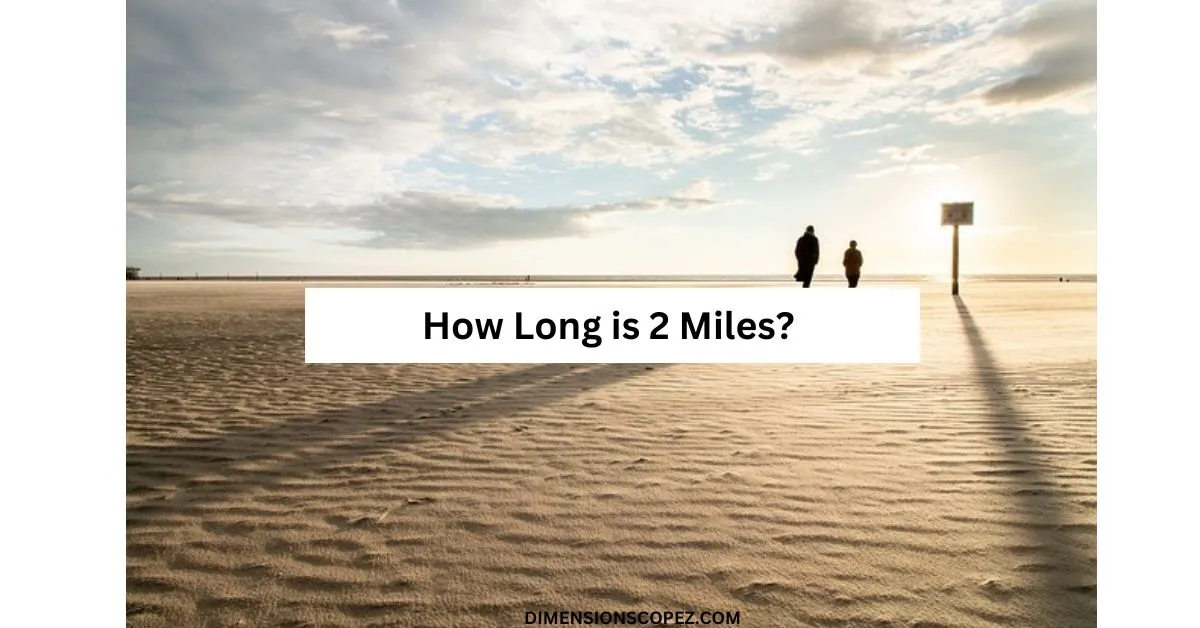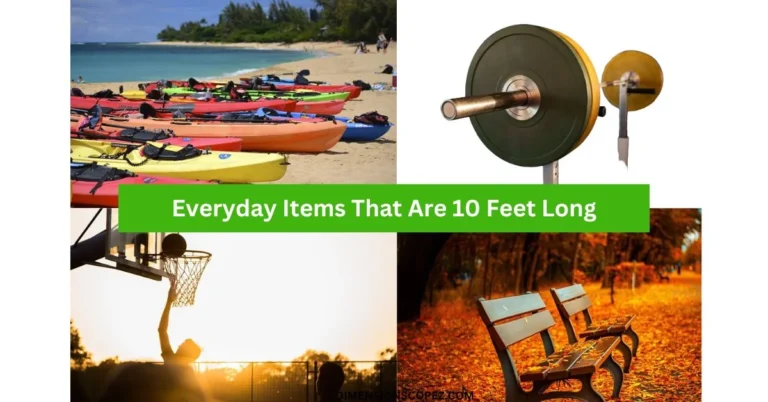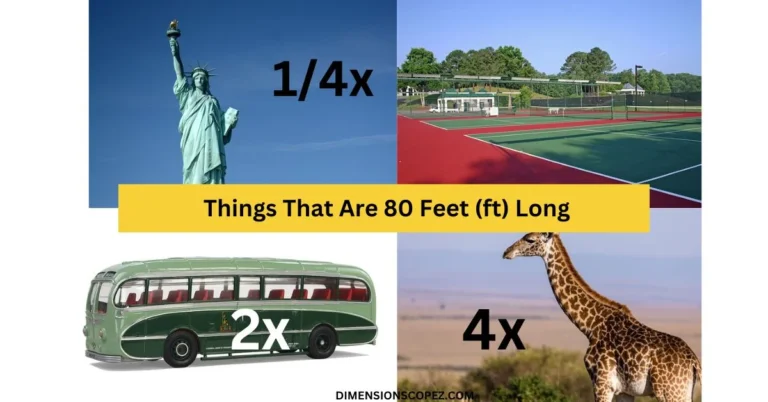How Long is 2 Miles? 10 Common Comparisons
It can be difficult to estimate when it comes to visualizing lengths that we don’t encounter regularly. Whether you’re considering a walk, a car ride, or visualizing it in terms of well-known landmarks, understanding how far 2 miles is can be quite enlightening.
In this piece, we’ll explore various comparisons to help you better understand this distance. From walking time to city blocks and famous landmarks, these examples are not just interesting facts—they can also be helpful for fitness enthusiasts tracking their progress, travelers planning their routes, or simply anyone curious about distances.
So, how long is 2 miles? Let’s break it down through ten common comparisons that bring this distance into relatable, everyday terms. If you imagine the length of famous landmarks or think about your daily step count, you’ll soon have a much better understanding of what two miles mean in different situations.
Let’s dive in!
How Long is 2 Miles to Walk?
One of the easiest ways to get exercise is to go for a walk. Understanding how long it takes to walk 2 miles can help you plan your activities and fitness routines. So, if you walk at a speed of 3 to 4 miles per hour (mph). At this pace, it would take approximately 30 to 40 minutes to walk two miles.
For example, if you’re walking through a city park or along a neighborhood trail, a moderate walking speed of 3 mph will get you to the 2-mile mark in about 40 minutes. If you’re pushing yourself to walk faster, say at 4 mph, you could complete the distance in just 30 minutes.
How Far is 2 Miles by Car?
When it comes to driving, two miles is a short distance that can be reached quickly, especially compared to walking. However, the time it takes to drive two miles can vary depending on multiple factors, such as traffic conditions, speed limits, and road types.
In an urban setting with moderate traffic and stoplights, it might take about 5 to 10 minutes to drive 2 miles. City driving often involves slower speeds and frequent stops, which can extend the travel time.
On the other hand, if you’re driving in a suburban or rural area with higher speed limits and less traffic, you could cover two miles in just 3 to 4 minutes. Highways and major roads with speed limits of 50 miles per hour or more allow for quicker travel times, provided there are no significant delays.
Related: How Long is 10 Miles? 9 Common Comparisons
10 Comparisons of 2 Miles
Understanding the distance of two miles can be made easier by comparing it to familiar activities and landmarks. Here are the ten detailed examples to give you a vivid sense of this distance.
1. 37 Laps Around a Standard Basketball Court
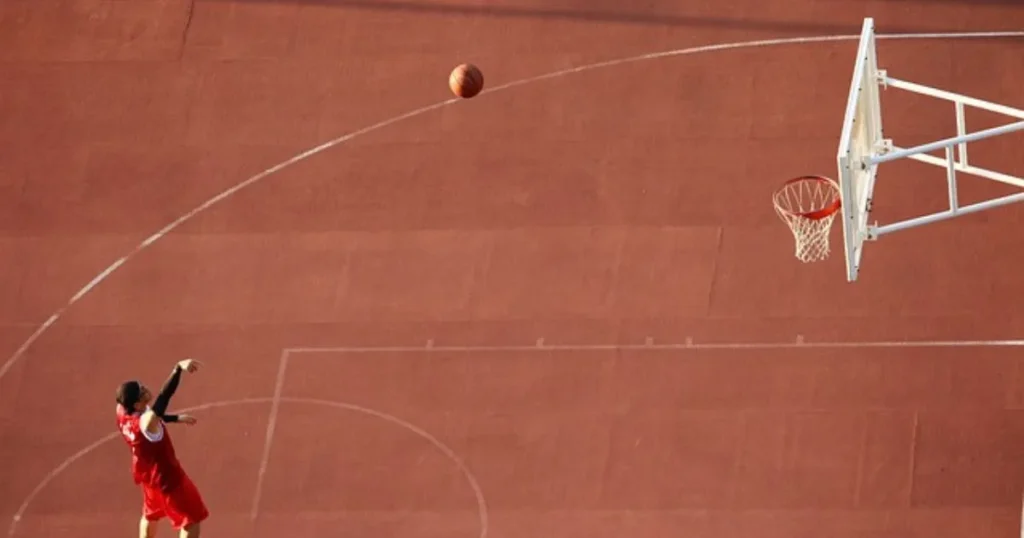
A standard basketball court, used in professional and collegiate games, measures 94 feet in length and 50 feet in width. If you run laps around the court, covering both the length and width, you’ll travel a total distance of 288 feet per lap (94 + 50 + 94 + 50). It will be equal to 0.0545 miles.
To convert this into miles, we need to remember that 1 mile equals 5,280 feet. Therefore, two miles is 10,560 feet. By dividing 10,560 feet by 288 feet per lap, we get approximately 36.67 laps. Rounding this up, we find that 37 laps around a basketball court equates to 2 miles.
This is helpful for basketball players and fans to understand the distance and highlights the endurance required to run nearly 37 continuous laps around the court. It’s an excellent way to visualize distance through repeated, familiar activity.
2. 32 Times A 100-Meter Dash

A 100-meter dash is a standard track and field event, and it’s a great way to measure shorter distances quickly. To understand how many times you’d need to run a 100-meter dash to cover two miles, we start with the conversion: 1 mile is approximately 1,609 meters, so 2 miles is about 3,218 meters.
Since a 100-meter dash is, as the name suggests, one hundred meters long, you would need to complete the dash 32 times to reach roughly 3,200 meters, which is the same as 2 miles.
It’s interesting for athletes and sprinters, as it underscores the repetitive nature of the distance. Imagining running 32 back-to-back 100-meter sprints provides a practical view of the length and the effort required to cover two miles.
3. 4,000 Walking Steps

For many people, tracking daily step counts is a common way to monitor physical activity and promote a healthy lifestyle. Knowing how many steps it takes to cover 2 miles can be a helpful benchmark for setting walking goals and staying active throughout the day.
According to today.com, approximately 2,000 steps equals 1 mile. On average, our stride length is about 2.5 feet, which translates to roughly 2,000 steps per mile. Therefore, to cover two miles, you would need approximately 4,000 steps.
Walking 4,000 steps provides a straightforward and accessible way to achieve the goal of covering this distance. Whether you’re walking around your neighborhood, on a treadmill, or during your daily activities, tracking Your steps can help you stay on track and keep you inspired.
4. The Length of the National Mall
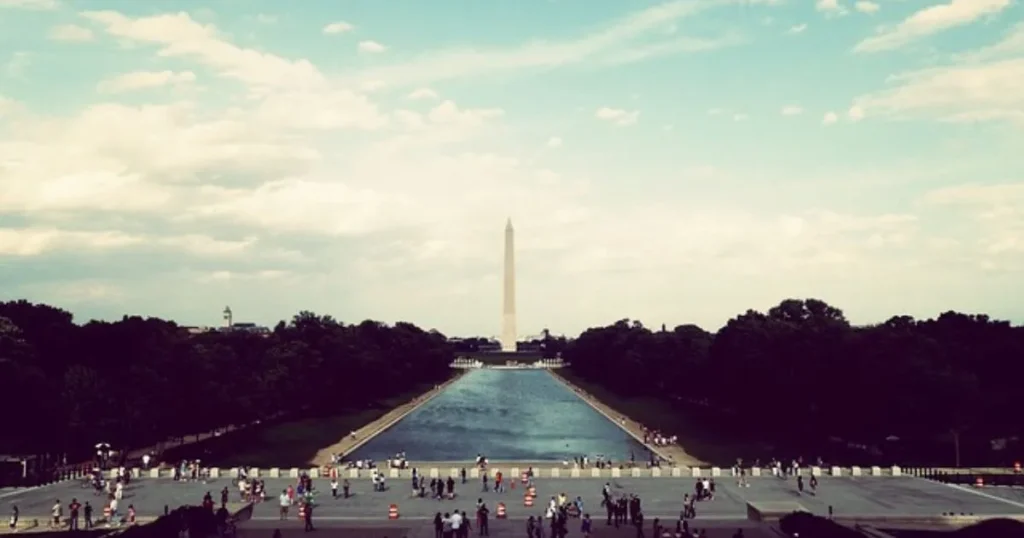
The National Mall in Washington, D.C., is one of the most iconic landmarks in the United States. It stretches from the Lincoln Memorial to the United States Capitol building, covering approximately 2 miles, making it a perfect real-world example of two miles.
Walking the length of the National Mall offers more than just exercise; it’s a journey through American history and culture. It’s a popular route for tourists and locals, providing a scenic and educational way to cover two miles.
Starting at the Lincoln Memorial, you pass by the Reflecting Pool, the Vietnam Veterans Memorial, the World War II Memorial, and the Washington Monument. Continuing past the Smithsonian museums, you finally reach the steps of the U.S. Capitol.
5. 64 Swimming Pools
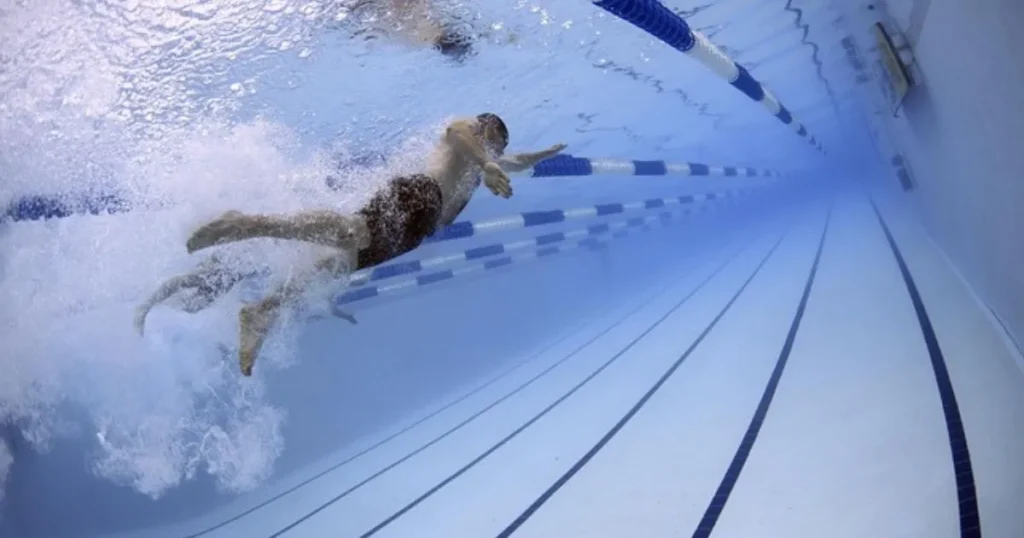
The length of an Olympic-size pool is 50 meters. It is a famous feature of the Olympic Games, serving as the stage for some of the world’s most thrilling and memorable swimming competitions.
To understand how many lengths of an Olympic pool equal two miles, you first need to convert miles to meters: 1 mile is approximately 1,609 meters, so 2 miles is about 3,218 meters. Since each length of an Olympic pool is 50 meters, you divide 3,218 meters by 50 meters per length, resulting in about 64.36 lengths.
These pools adhere to strict standards set by the International Swimming Federation (FINA) to ensure uniformity and fairness for athletes competing on the international stage. The pool is divided into lanes, typically ranging from 8 to 10 lanes, each measuring 2.5 meters (8.2 feet) wide.
6. Half the Las Vegas Strip

The Las Vegas Strip is another famous landmark known for its lively nightlife, casinos, and entertainment venues. The Strip itself is approximately 4.2 miles long, stretching from the Mandalay Bay Resort and Casino on the south end to the Stratosphere Tower on the north end.
Covering 2 miles on the Las Vegas Strip would take you roughly halfway along this bustling boulevard. Starting at Mandalay Bay, you might reach as far as the Bellagio or Caesars Palace, passing by iconic landmarks such as the Luxor with its pyramid and Sphinx, the colorful Excalibur, and the bustling New York with its replica Statue of Liberty.
Walking two miles on the Strip gives you a taste of the energy and excitement of Las Vegas, encompassing a diverse array of sights and sounds.
7. 10 Laps Around an American Football Field

An American football field, including the end zones, measures 120 yards long and 53 yards wide. Each lap around the perimeter of the field (running around the outer edge) covers 360 yards or approximately 0.2 miles (this includes both length and width, plus a bit extra for the corners).
When we calculate the number of laps around the field, we see that ten laps around an American football field come very close to 2 miles. To put this into perspective, 1 mile is equal to 1,760 yards. Therefore, 2 miles equals 3,520 yards.
Here’s the math: Dividing 3,520 yards by 360 yards per lap gives us roughly 9.78 laps. This means that 10 laps around a football field offers an excellent cardio workout and gives you a clear sense of what miles entail.
8. One Round Trip Along the Brooklyn Bridge

The Brooklyn Bridge is also an iconic piece of New York City’s skyline, and you can compare it to two miles. The pedestrian walkway across the bridge is about 1.1 miles long one way, making a round trip slightly over two miles.
Walking from the Manhattan side to Brooklyn and back again covers approximately 2.2 miles, just a bit more than our 2-mile benchmark.
A round trip on the Brooklyn Bridge is not only a measure of distance but also an experience in urban exploration. It highlights the bridge’s architectural beauty and historical significance, allowing you to cover two miles while enjoying one of the most scenic walks in New York City.
9. 40 City Blocks

In many U.S. cities, particularly in Manhattan, city blocks are a common way to measure short distances. A typical city block in Manhattan is approximately 1/20 of a mile (roughly 264 feet). To calculate how many city blocks equal two miles, you can use this simple formula: 2 miles is 10,560 feet (since there are 5,280 feet in a mile).
Dividing 10,560 feet by 264 feet per block gives you precisely 40 city blocks. Walking 40 city blocks in Manhattan, for example, would take you from the southern tip of Central Park (59th Street) all the way down to 19th Street.
The journey would pass through various neighborhoods, showcasing the city’s diversity. As you head downtown, you’d move from the bustling midtown area, with its skyscrapers and busy avenues, into more residential and boutique-lined streets.
10. 8 Laps Around a Standard Track
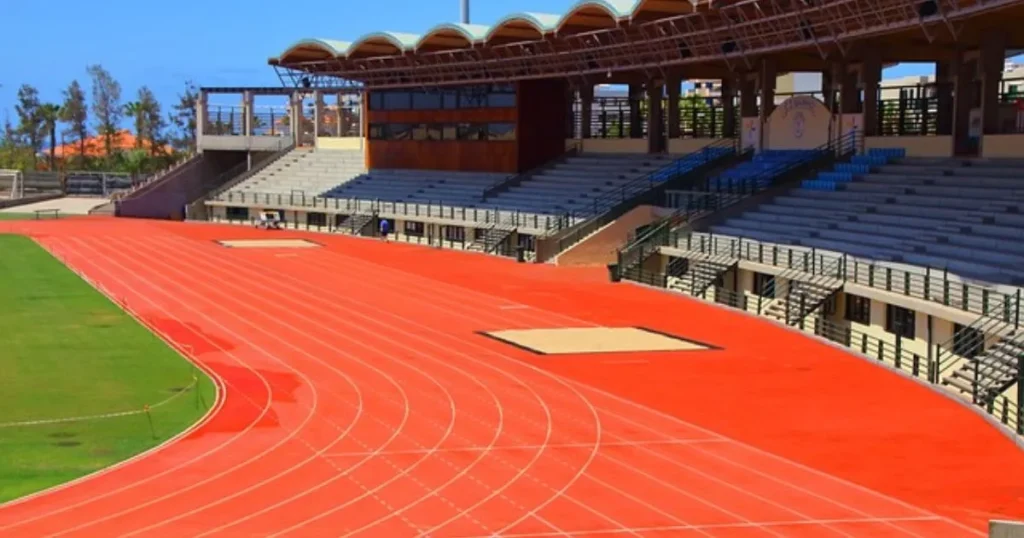
A typical running track is 400 meters long. Since 1 mile is approximately 1,609 meters, 2 miles would be about 3,218 meters. To find out how many laps around the track this distance entails, you divide 3,218 meters by 400 meters per lap, which equals 8.045 laps.
Running or walking eight laps around a standard track is a straightforward way to measure 2 miles. If you are an athlete, jogger, and fitness enthusiast who regularly uses these tracks for training, then it’s easy to visualize the length of two miles.
It also offers a controlled environment where distance and time can be easily tracked and measured. Completing 8 laps provides a clear and consistent measure of two miles, making it easier to set goals, monitor progress, and compare performance over time.
Final Thoughts
Knowing how far two miles isn’t just about numbers; it’s also about connecting it to things we see and do every day. These examples give you a clear picture of what two miles mean, whether you’re walking through city streets, jogging around a track, or picturing famous sites.
So, when you have to answer the question “How long is 2 miles?” remember these stories. No matter how you measure it—in runs around a football field, lengths in an Olympic pool, or steps on your fitness tracker—each view gives you a different view of how big and varied our world is.
See Also>> How Far is 50 Miles? 12 Common Comparisons

